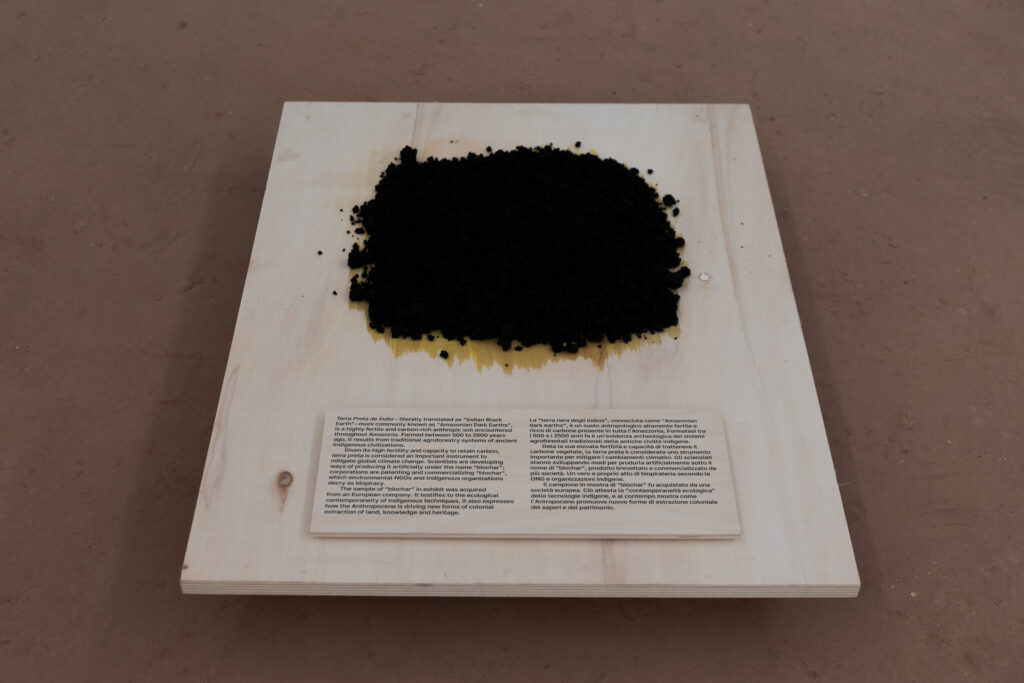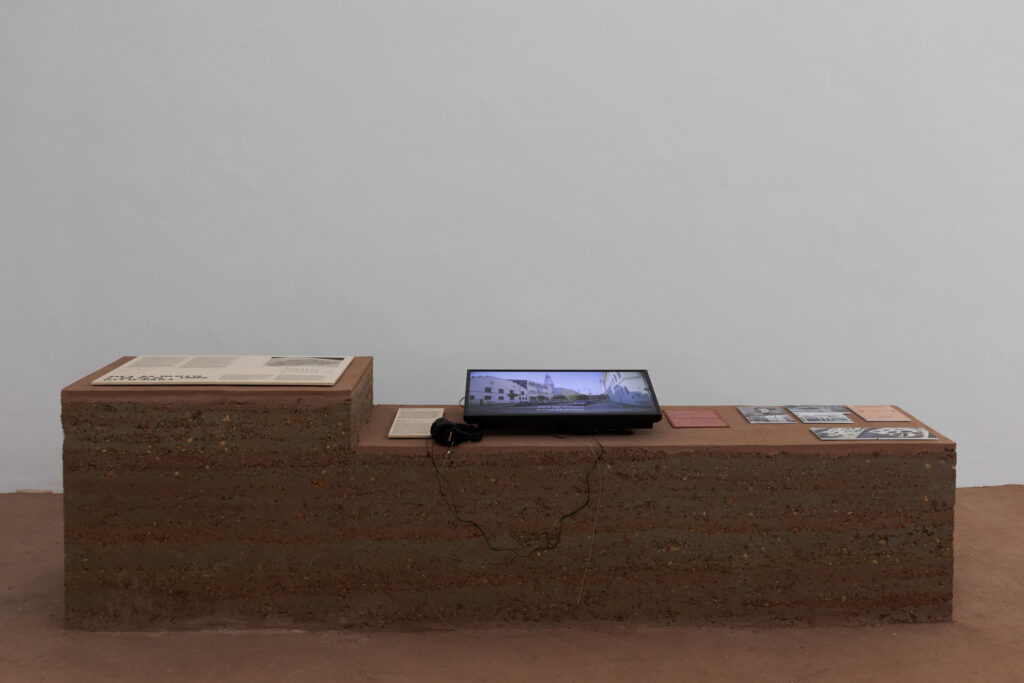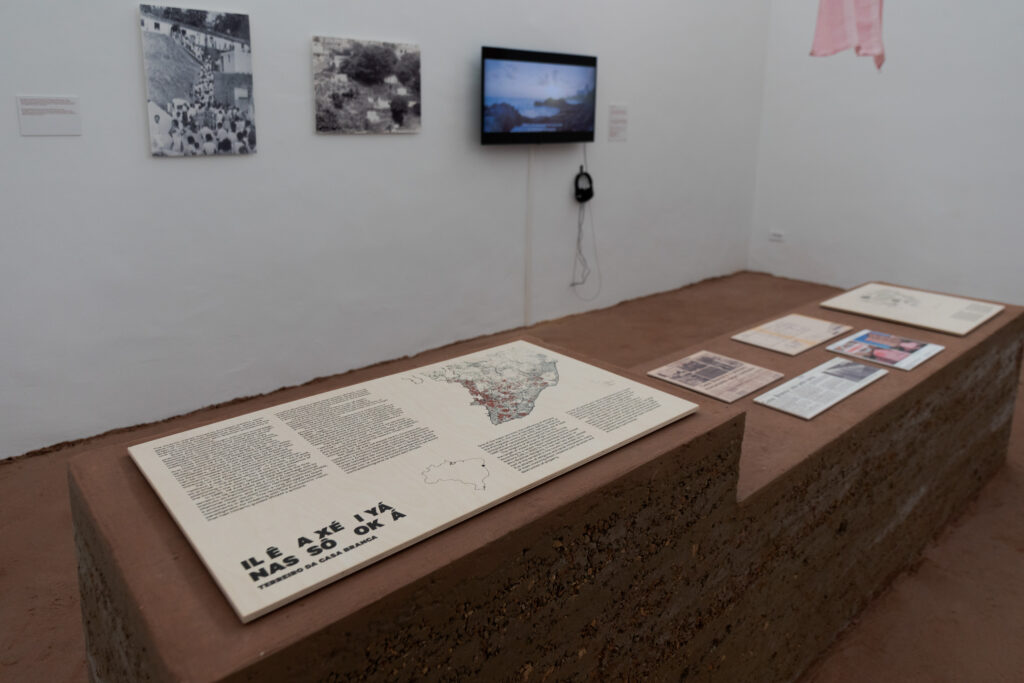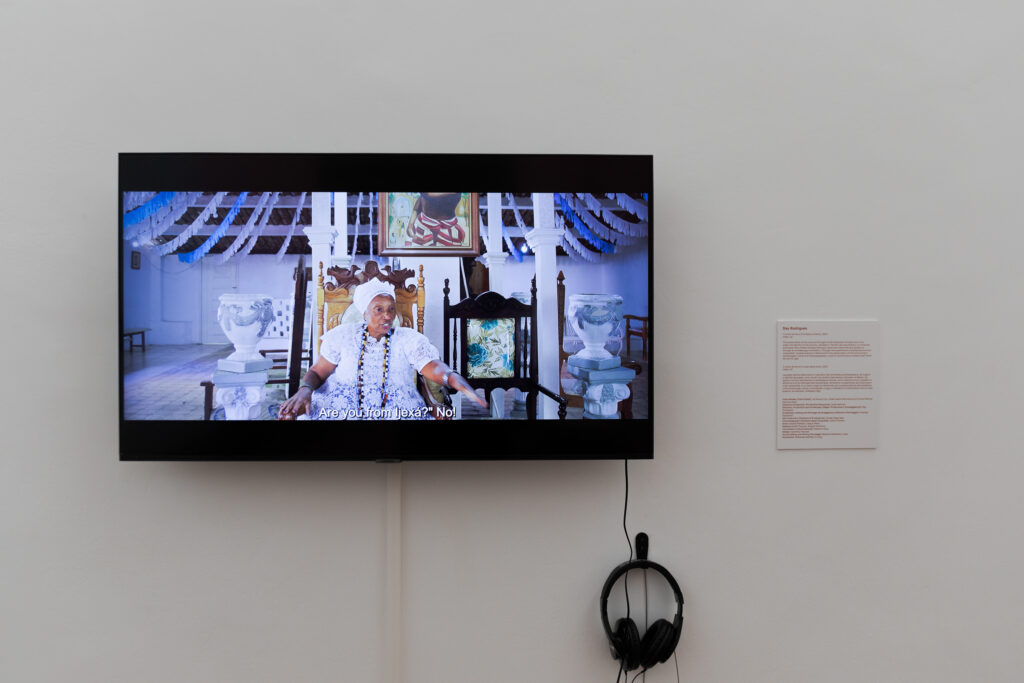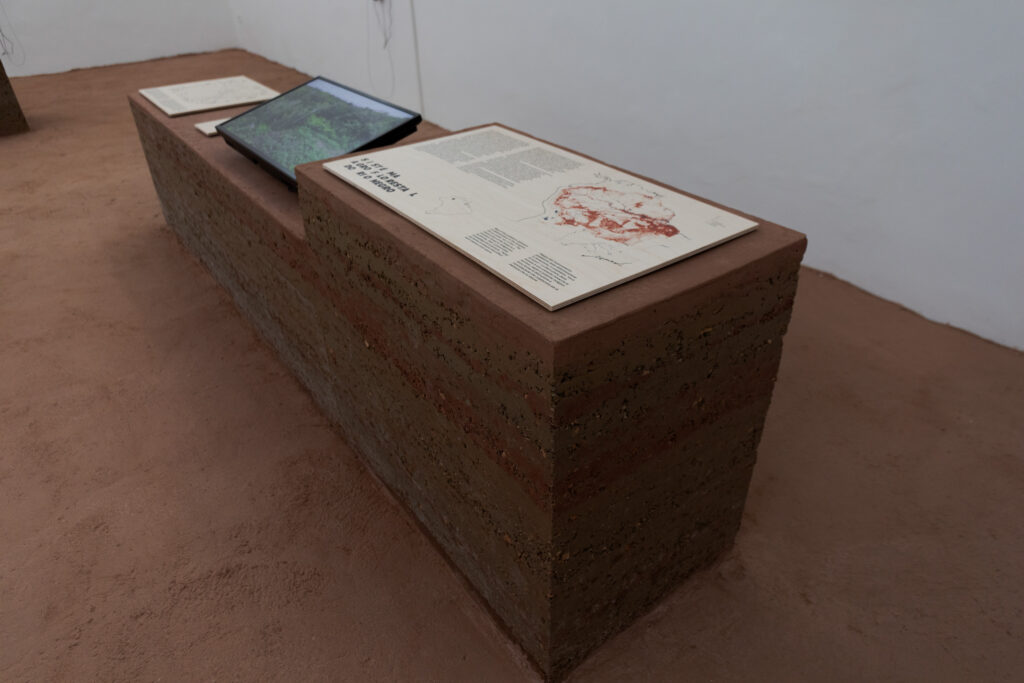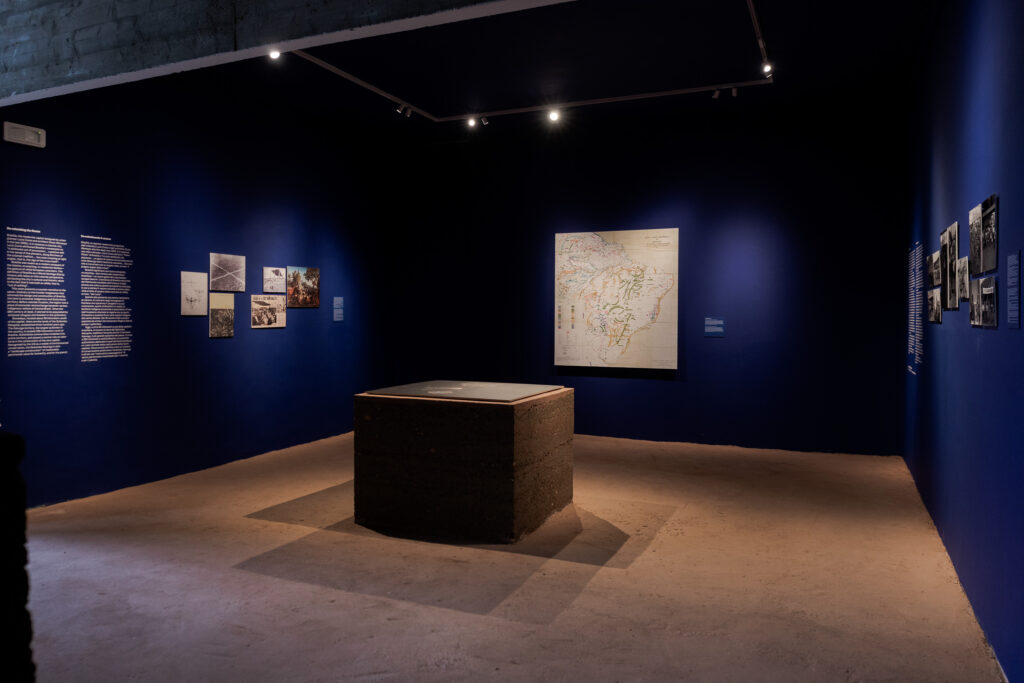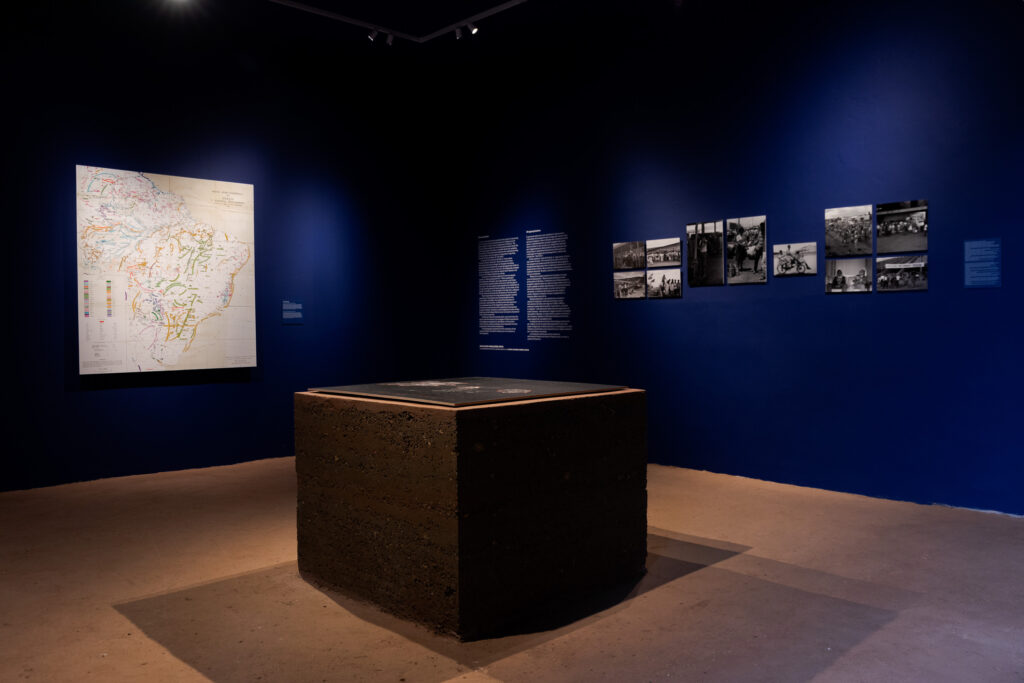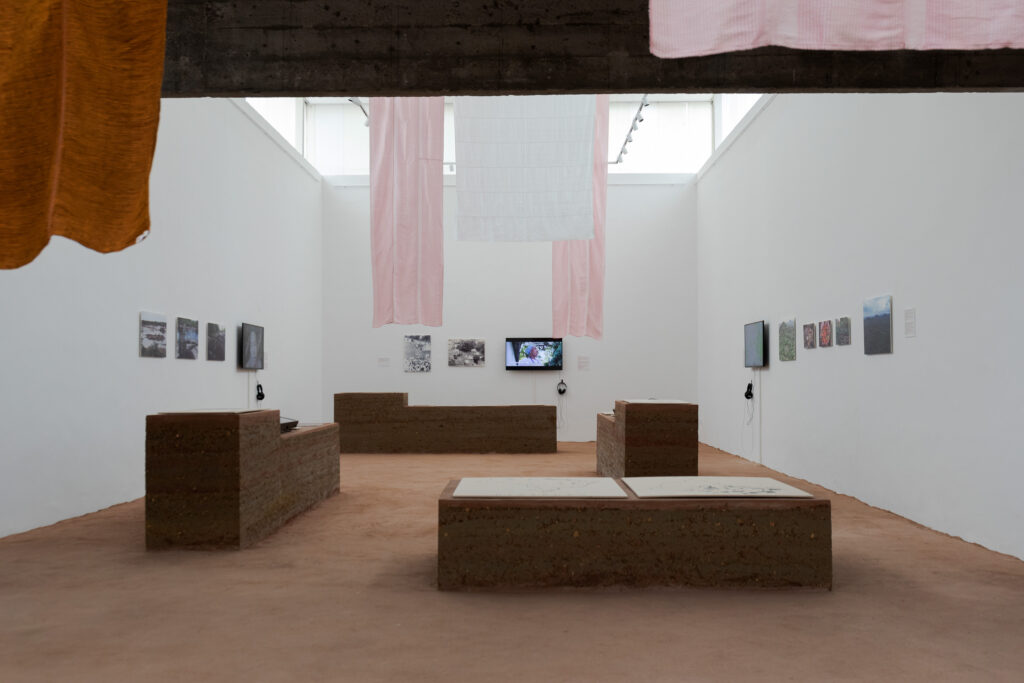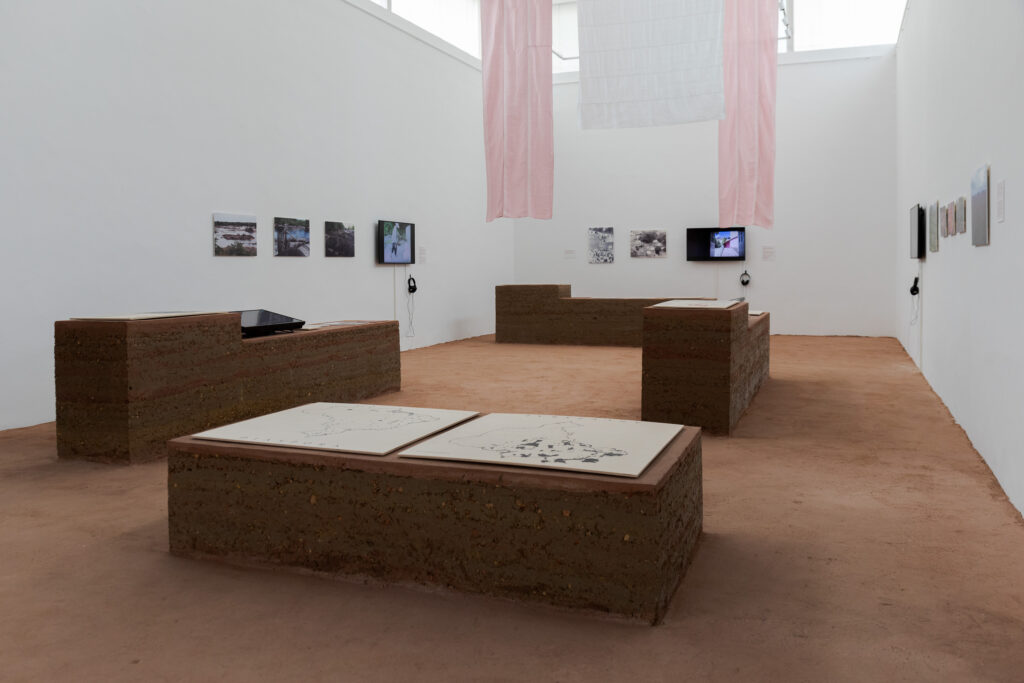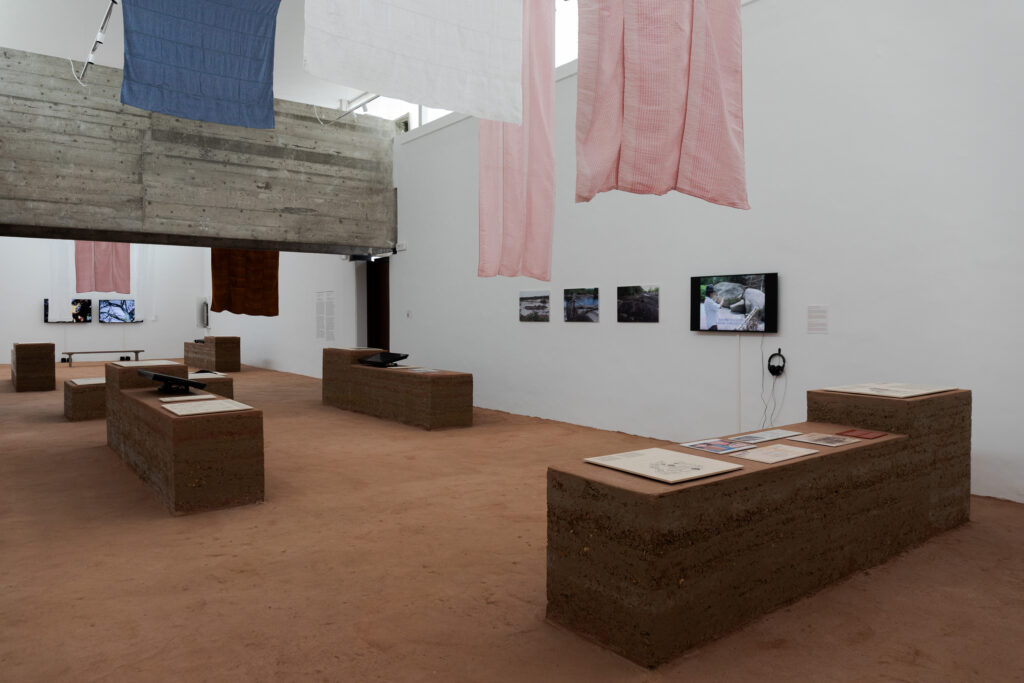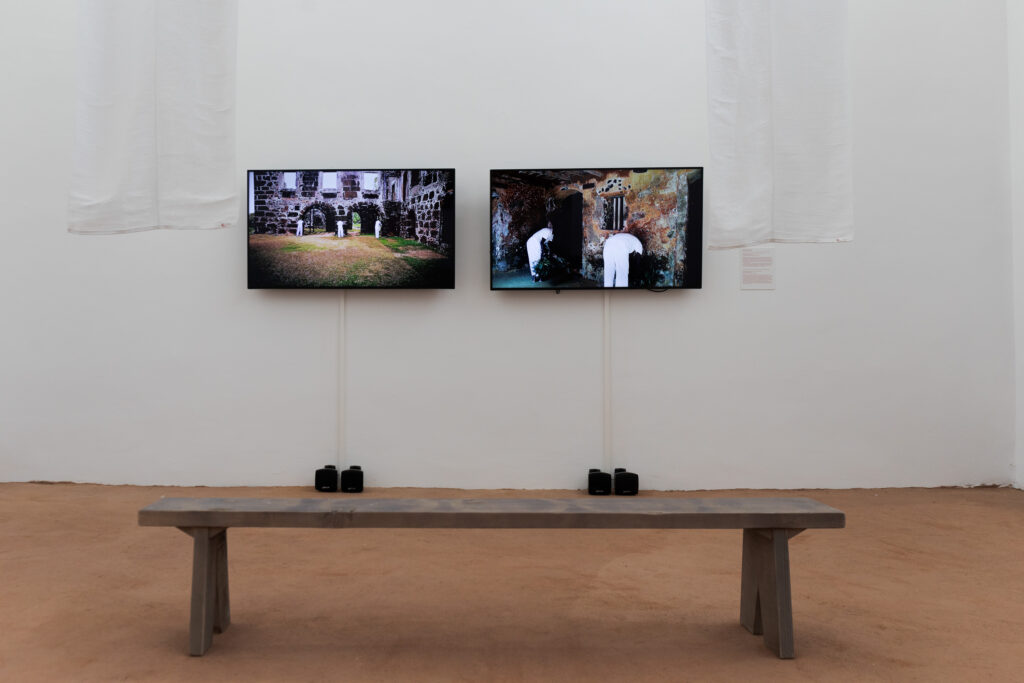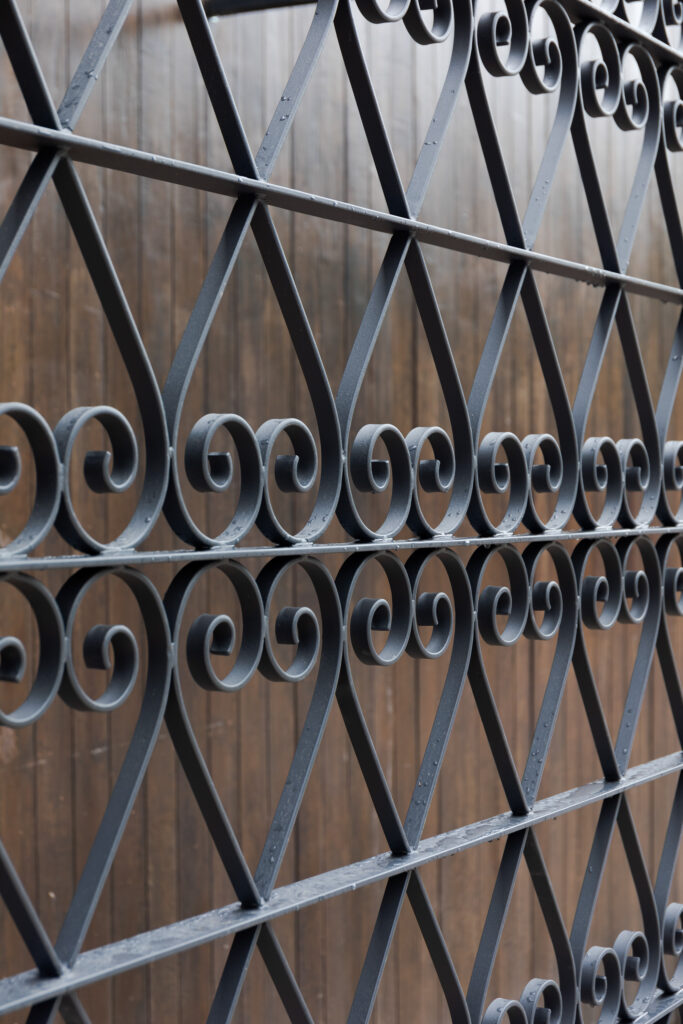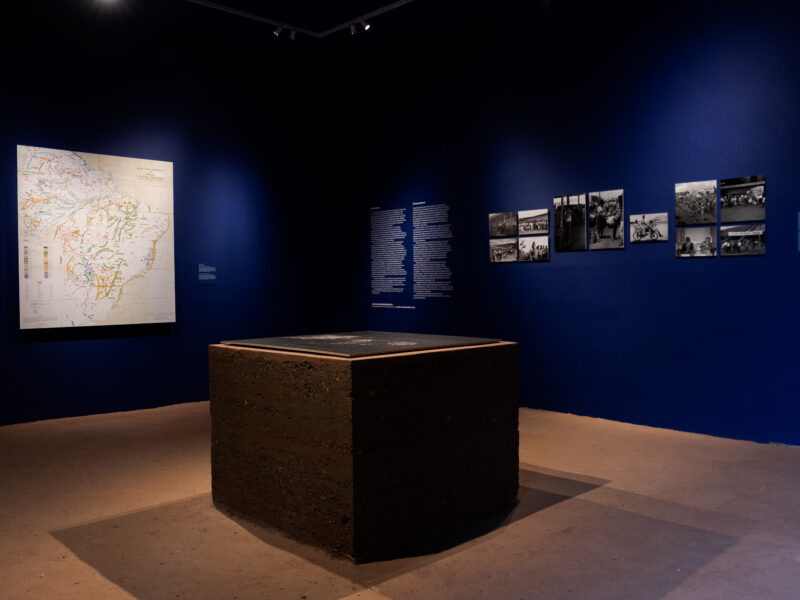
Commissioners: José Olympio da Veiga Pereira, president of the Fundação Bienal de São Paulo
Curators: Gabriela de Matos and Paulo Tavares
Exhibitors: Ana Flávia Magalhães Pinto, Ayrson Heráclito, Day Rodrigues with the collaboration of Vilma Patrícia Santana Silva, Fissura collective, Ilê Axé Iyá Nassô Oká (Casa Branca do Engenho Velho), Juliana Vicente, Mbya-Guarani IndigenousPeople, Tukano, Arawak and Maku Indigenous Peoples, Tecelãs do Alaká (Ilê Axé Opô Afonjá), Thierry Oussou, Vídeo nas Aldeias
Project Manager: eiletz | ortigas architects
Construction and Installations: R3B
We are thrilled! One of the pavilions we set up entirely for this architecture biennial earned the Golden Lion! Intense months full of work and effort led to great satisfaction!
TERRA, this is the title of the exhibition, was curated by architects Gabriela de Matos and Paulo Tavares, with the participation of Mbya-Guarani indigenous peoples; Tukano, Arawak and Maku indigenous peoples; Tecelãs do Alaká; Ilê Axé Iyá Nassô Oká; Ana Flávia Magalhães Pinto; Ayrson Heráclito; Day Rodrigues with the collaboration of Vilma Patrícia Santana Silva; Collective Fissura; Juliana Vicente; Thierry Oussou and Video nas Aldeias.
The pavilion, which our team set up entirely, thinks of Brazil as land, a word that here takes on a double meaning: land as soil, manure, territory, but also as planet and common home of human and non-human life. A concept that brings us back to the land as both memory and future, looking to the past to expand the field of architecture in relation to the most pressing contemporary issues.
Structured in two galleries, the exhibition first questions the colonial narrative that the city of Brasilia was built on nothing, revealing instead how indigenous peoples had already been removed from the region-from their land-to be relegated to the margins of the modernist city. Then, through socio-spatial projects and practices of indigenous and Afro-Brazilian knowledge about land and territory, the curators refer us back to ancestral knowledge and archaeology, building on the memorial heritages of reference.
A journey that starts from the land as material and arrives at its global and cosmic meaning, leading to reflections on our use of it as a society, decolonization and collective memory.
Building this pavilion was an incredible experience; we are still in disbelief. Absolutely not to be missed.
A photo report of the intense implementation phase will be available soon, below is the photo gallery courtesy of Rafael.
Thanks to @eiletz.ortigas architects for choosing us again this year!
View of the exhibition Terra, Brazilian participation at the 18. International Architecture Exhibition – La Biennale di Venezia. Photo: Rafa Jacinto / Fundação Bienal de São Paulo

